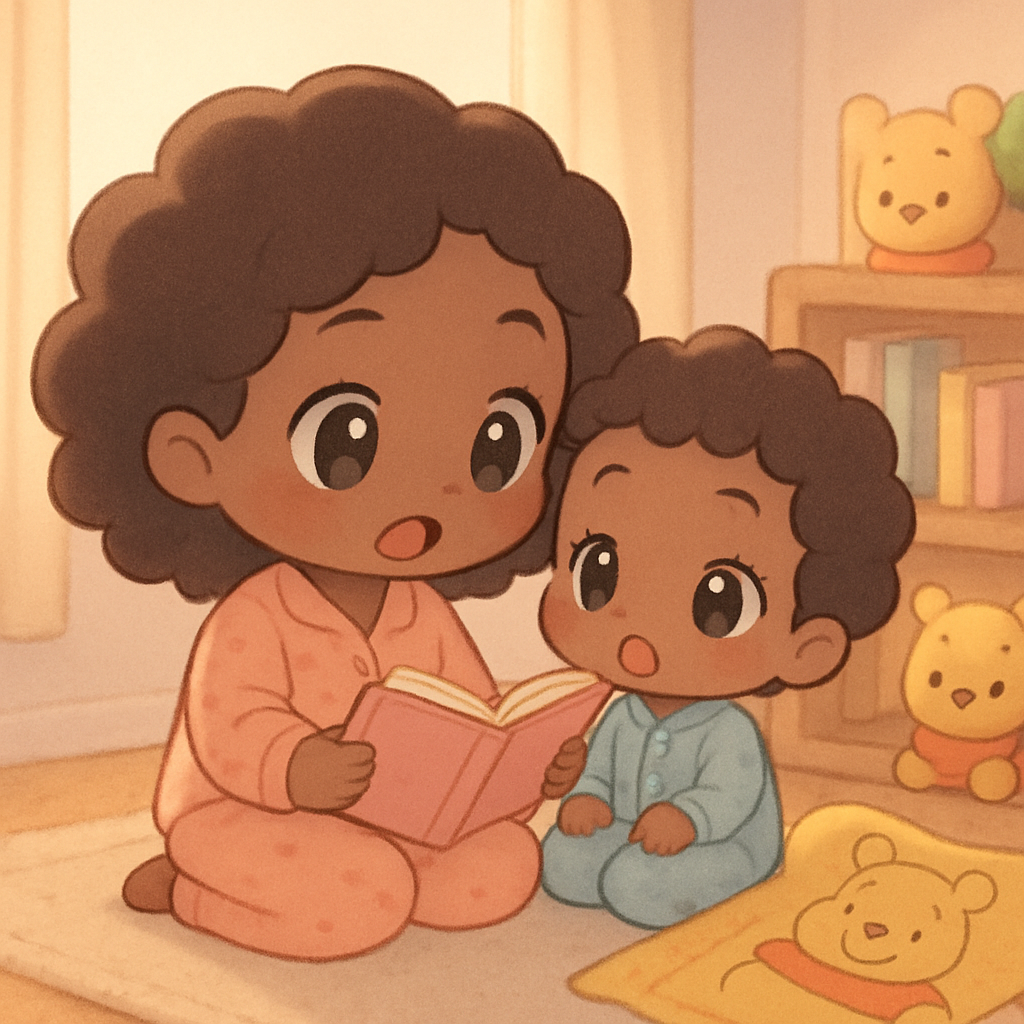Winnie the Pooh bedtime: deepen bonds at night with gentle story routines

Quick Take: a warm start
I remember the first time my little one crawled into my lap for a Pooh tale. The room was quiet, the clock ticked softly, and I realized that bedtime isn’t just about sleep—it's our daily hello to each other. When we invite Winnie the Pooh into our routine, we create a shared space where worries soften and connection grows. In this article, we’ll explore how Winnie the Pooh bedtime can deepen your bond with your child, with practical steps you can start tonight.
What makes Winnie the Pooh bedtime special?
What’s unique about Pooh isn’t just the familiar adventures, but the tone of the stories—gentle, hopeful, and filled with small discoveries. This matters for kids who thrive on predictability and warmth. A Pooh-based routine can cue the brain that winding down is safe, predictable, and emotionally rich. Think of Pooh as a trusted friend who quietly teaches patience, empathy, and resilience.
How to weave Pooh into a calming bedtime routine
- Create a Pooh-friendly wind-down space
- Clear a small, cozy corner with a soft blanket and a glow light.
- Play a soft instrumental or nature sounds in the background.
- Keep the scene simple; avoid screen time during this period to support sleep onset.
Why it matters: A predictable space signals the brain to relax and lowers bedtime resistance. Your child learns what comes next, which reduces anxiety and helps them settle more quickly.
- Use a short, shared Winnie the Pooh story rotation
- Choose 2-3 Pooh stories or passages for the week.
- Read slowly, with expressive voices and plenty of pauses for reflection.
- After reading, invite your child to share one feeling from the day.
Why it matters: Reading together builds language, emotional literacy, and secure attachment. The pause after a story becomes a moment of connection where your child feels seen.
- Practice a brief emotion coaching moment
- When Pooh encounters a worry, you can name it aloud with your child: “Oh no, Piglet is scared. What could help him feel brave?”
- Let your child offer one coping strategy, even if it’s small—snuggling, talking to a friend, or imagining a brave moment.
Why it matters: This models healthy regulation and reminds kids that emotions are manageable under caregiver guidance.
- End with a tiny ritual, not a pep talk
- A quick hug, a shared breath, and a whispered affirmation like, “We’ve got this, little one.”
- A gentle lights-out cue, signaling sleep is coming, not going away.
Why it matters: Short, affectionate rituals reinforce safety and closeness, which boosts comfort as sleep approaches.
Real-world variations for different ages
- Toddlers (2-4 years): Short, soothing Pooh passages, lots of hand-holding, and a consistent cue (heartbeat-like reading tempo).
- Preschoolers (4-6 years): Longer stories, questions about characters’ feelings, and a brief problem-solving moment.
- Early readers (6-8 years): Invite them to read a page aloud, with you modeling expressive reading and then reflecting on what Pooh teaches about friendship.
Why this matters: Flexibility preserves the bond while honoring your child’s developmental stage and literacy level.
Addressing common bedtime bumps
- “My child resists leaving playtime.” Try a daily Pooh timer: 10 minutes of play, 5 minutes of wind-down Pooh, then lights out.
- “We’re always rushing.” Pick a fixed bedtime window and stick to it. Consistency is a powerful bond-builder.
- “They worry about separation at night.” Pooh stories can be used as a transitional object—part book, part comfort blanket.
Key takeaway: The goal isn’t perfection but presence. Pooh can be a soft bridge between daytime energy and nighttime calm.
Quick summary: Winnie the Pooh bedtime in 4 essential steps
- Set up a cozy Pooh corner with soft light.
- Read 2–3 Pooh stories at a steady, calm pace.
- Do a brief emotion coaching moment after reading.
- Close with a warm ritual and a comforting cue.
People Also Ask (FAQ)
What makes Winnie the Pooh bedtime effective for kids? Pooh’s gentle tone and familiar characters provide a safe, predictable routine that supports emotional regulation and parent–child bonding.
How long should a Pooh bedtime routine last? Around 15–25 minutes is typically enough to wind down without dragging on; adjust to your child’s cues.
Can Pooh stories help with separation anxiety at night? Yes. The familiar stories and caregiving interactions offer reassurance and a predictable nightly ritual.
Age-specific reflections
- Infants and toddlers benefit from a calm voice and simple, slow pacing; the rhythm itself is soothing.
- Preschoolers enjoy naming feelings and connecting actions in the story to their day.
- Early elementary kids might enjoy a brief reflection question about friendship and problem-solving in Pooh’s world.
Personal story: a small moment that mattered
One night, after a long day, my son tucked his head into my shoulder while I whispered Pooh’s gentle lines. He whispered back a concern about a scary dream. We stayed quiet together, then talked about how Pooh faced fear with friends. That tiny conversation became a memory we revisit when sleep feels stubborn. It reminded me that bedtime isn’t a performance; it’s a chance to be together.
Final thoughts from Dr. Elena Vance
If you’re feeling tired but hopeful, you’re already doing something right. Winnie the Pooh bedtime isn’t about a perfect script; it’s about showing up with warmth, patience, and a listening ear. Breathe with your child, read with expression, and let the story be a shared space where you both settle into calm. You’re doing great, and these small moments compound into trust and security over time.